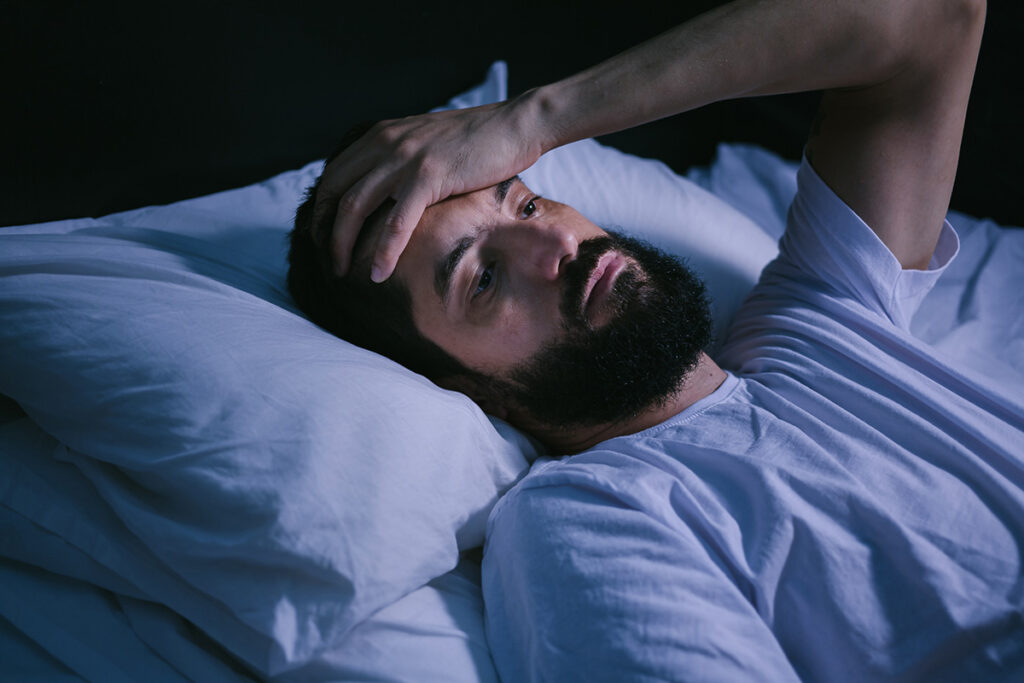Obstructive Sleep Apnea
Obstructive Sleep Apnea (OSA) is a common condition that occurs when the upper airway becomes blocked during sleep, interrupting breathing and reducing oxygen saturation. During OSA, the walls of the throat relax and narrow or close, or soft tissue in the head or neck presses down on the windpipe.
When breathing is reduced, it’s called hypopnea, and when breathing completely stops, it’s called apnea. OSA can range from mild to severe, and is measured using the apnea-hypopnea index (AHI). This is measured during a sleep study that looks for abnormal breathing during sleep. The AHI is the average number of apneas and hypopneas seen per hour of the test.
- Another type of sleep apnea is central sleep apnea (CSA), which occurs when the brain doesn’t send proper signals to the muscles that control breathing.
- Some people may have a combination of both obstructive and central sleep apnea.

Symptoms of OSA include:
- Witnessed spells of decreased or stopping breathing
- Loud snoring
- Waking up choking or gasping
- Headaches upon waking
- Forgetfulness
- Mood changes
- Insomnia
- Recurrent awakenings
- Feeling unrefreshed after sleeping
- Need for naps
- Excessive daytime sleepiness
OSA can have significant implications for overall health. It is associated with increased risk of heart failure, heart attack, stroke, mood disorder, poor memory and concentration, worse obesity, worse diabetes, decreased quality of life, and poor driving safety.
Risk factors for OSA include:
- Obesity
- Age
- Large tonsils
- Large tongue
- Changes in hormone levels (menopause, low thyroid)
- Large neck circumference
- Excess fatty tissue in the head and neck
- Abdominal fat
- Use of alcohol or other sedatives
- Smoking
- Frequent nasal congestion
- Family history
Treatment of Obstructive Sleep Apnea
The treatment of obstructive sleep apnea is imperative to prevent the numerous complications and health effects it causes. There are several proven therapies that include life style modification, medical therapies, and various surgeries. The choice of what therapy to use depends on several variables: severity of OSA; weight; anatomy of the throat, mouth, tongue, jaw; personal preference. The milder the severity of OSA, the more options can be successful. Moderate and severe sleep apnea.
The mainstay of treatment for obstructive sleep apnea is positive airway pressure (PAP) therapy, often called CPAP and BiPAP. A mask is worn that is attached to a machine that supplies air pressure to the nose and/or mouth to help keep the throat tissues from collapsing and obstructing. When tolerated and used consistently, it can be very effective. It may take several adjustments made by you and your sleep specialist to improve use.
Life style modifications can work well for mild or mild-to-moderate OSA and include:
- Weight loss. As BMI is reduced, sleep apnea can improve.
- Sleeping position. OSA is often worse while lying on the back.
- Reduce alcohol or sedative use, especially just before bed.
- Oral and throat exercises to improve muscle tone and reduce collapse.
Devices can be used:
- Nose strips to open the nasal airway.
- Nasal cones to open the nasal airway.
- Oral appliance to pull the tongue forward and stiffen the palate.
Medicines to help:
- Rhinitis/allergy therapy to improve nasal breathing.
- Thyroid hormone for low thyroid levels.
- Therapy for diabetes
- Weight loss medications are showing significant promise. The GLP-1 receptor agonists such as semaglutide (Ozemoc/Wegovy), tirzepatide (Mounjaro), etc., cause weight loss and improvement in sleep apnea.
Surgery can help. The type of surgery is dependent on anatomy and tolerance for procedures. Numerous types of surgery have been tried. The main function of surgery is to modify anatomy to help maintain an open airway. Surgery must sometimes be done in a staged approach and need several procedures. These can be difficult to tolerate and recovery can be difficult, but if the anatomy is conducive to surgery, it can be effective.
- Nasal surgery to improve nasal breathing.
- Tonsillectomy for enlarged tonsils (and sometimes the adenoid).
- Uvulopalatopharyngoplasty (UPPP or UP3) is the shortening of the soft palate and removal of excess tissue from the back of the throat. This can also use ways to suspend loose tissues and muscles.
- Tongue reduction
- Tongue suspension
- Hyoid bone suspension
- Maxillo-mandibular advancement, done by specialized oral surgeons to move the upper and lower jaw forward to bring the tongue and palate forward.
- Bariatric surgery
Hypoglossal Nerve Stimulator Implantation—Inspire.
This is a surgical procedure that implants a small electrode onto the hypoglossal nerve. The hypoglossal nerve stimulates the tongue to move. Specific branches that cause the tongue to move forward are located for the stimulator implantation. Sensors detect when the patient inhales; a pulse generator then sends the tiny electrical stimulation to the nerve, and the tongue moves, and the palate stiffens.
This procedure is done in the operating room and most people go home the same day. It is meant for people with moderate to severe sleep apnea and cannot tolerate PAP therapy. These patients often have few options once CPAP therapy fails, and the hypoglossal nerve stimulator.
